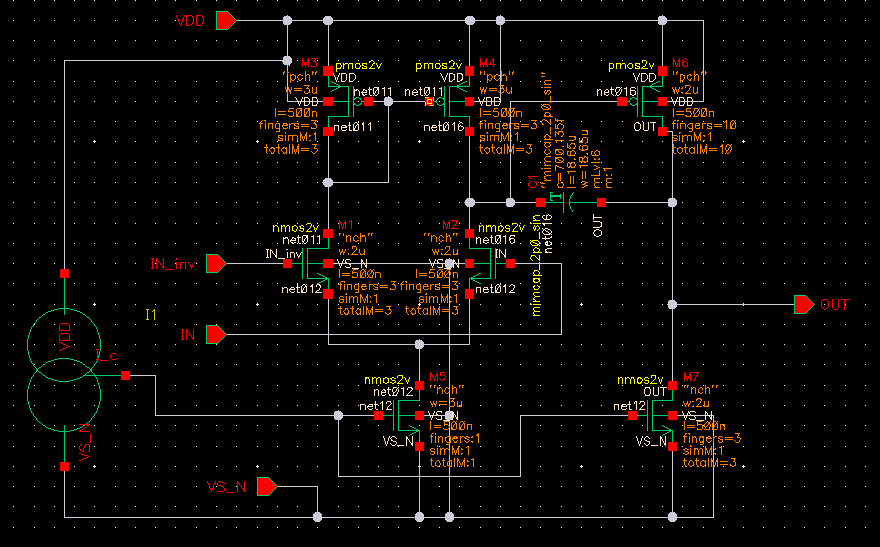I'm trying to design a clock with 1.8V CMOS. I've designed the Op-amp and individually it works fine (simulated with up to 10MHz pulse input) . But when I use this opamp to draw the feedback circuit , it provides no output.
Output stays tends to zero volts (actually -41 uV ). As there is no desired output,I'v tried many capacitor value and feedback resistor value to see any kind of output pulse, but no luck. As I do not concern with limiting current, current limiting resistor is not used. I even manually give pulse in input to provide startup condition, no luck there either.
and here is the of Op-amp simulation in 10MHz input pulse at Inverter input. and zero voltage in non inverting input. (Output is not sharp but is more then enough for my use)

Please, could you give my any suggestion, where could I possibly do wrong? How should I approach next?
thank you for your time.


